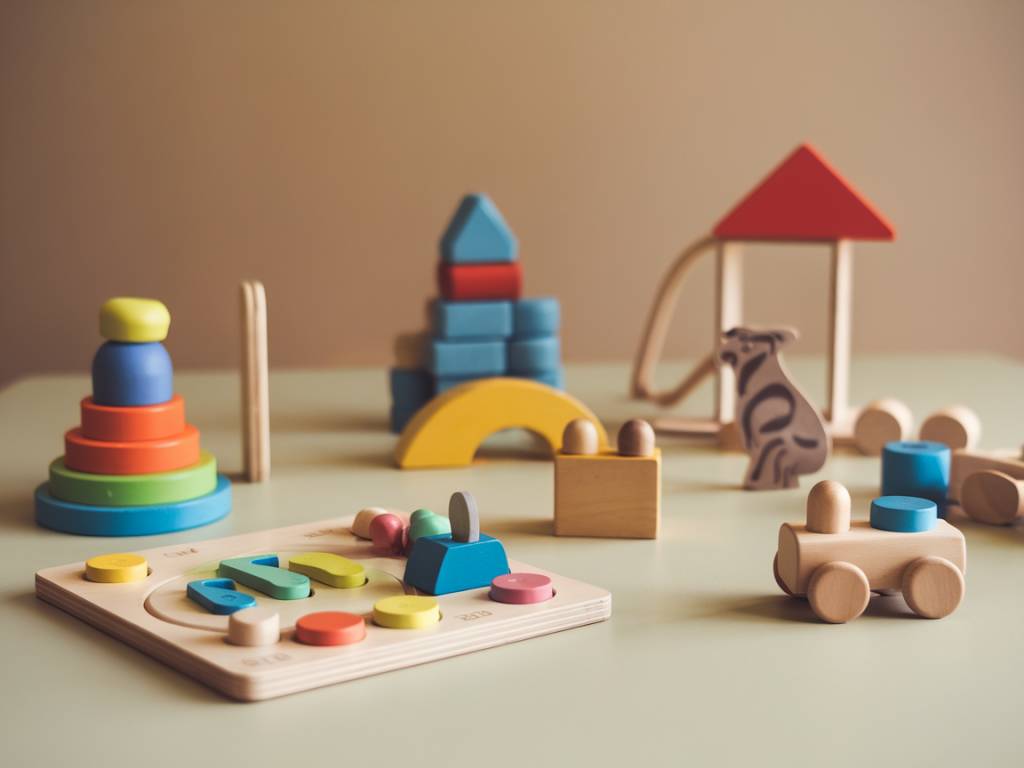Why Introducing Educational Toys Early Matters
Introducing educational toys during a child’s early development is critical for nurturing cognitive, emotional, and motor skills. However, while educational toys have the potential to be incredibly beneficial, they can also fail to deliver results when certain mistakes are made during their introduction. To fully maximize the benefits of early learning tools, parents and caregivers need to avoid common pitfalls. By doing so, they can foster a positive learning environment that supports growth and engagement in young children.
Choosing Toys That Are Not Age-Appropriate
One of the most frequent mistakes is selecting toys that do not match the developmental stage of the child. Educational toys are designed with specific age groups in mind, focusing on the evolving skill sets of toddlers, preschoolers, and older children. When a child is given a toy that is too advanced or too simple, they can quickly become frustrated or bored.
For example, puzzle toys with small, intricate pieces may overwhelm a toddler, while a stacking toy might seem underwhelming for a kindergartner. Always check the manufacturer’s age recommendation, and observe how your child interacts with toys to ensure the level of challenge is appropriate.
Overloading a Child With Too Many Toys at Once
While it might be tempting to fill your home with an array of educational toys, there is such a thing as too much of a good thing. An overwhelming number of toys can lead to overstimulation and may impair a child’s ability to focus on a single activity for an extended period.
Instead of introducing several toys at once, try rotating them. This ensures that your child remains engaged without becoming distracted or bored. A simplified toy rotation system also allows young children to fully explore the benefits of each toy.
Focusing Too Much on « Educational Value » Over Fun
An educational toy loses its value if it does not keep the child engaged. Children learn best when they’re actively having fun. Parents and caregivers often focus too much on a toy’s learning capacity rather than how entertaining it is for the child.
To avoid this mistake, prioritize toys that align with your child’s interests. For example, if your child loves animals, an alphabet set featuring animal shapes might be more engaging than a standard letter puzzle. Always remember that the best educational toys strike a balance between learning and play.
Ignoring Open-Ended Play Opportunities
Not all educational toys are created equal. Some are highly structured, guiding children to a specific outcome, while others encourage open-ended play. The latter often fosters creativity, critical thinking, and problem-solving skills.
Avoid choosing toys that leave little room for imagination. Blocks, magnetic tiles, and art supplies are excellent examples of educational tools that allow children to experiment and explore without rigid constraints. These types of toys stimulate curiosity and help develop a love for learning.
Neglecting to Play Along With Your Child
Parents and caregivers play a crucial role in the educational experience of their children. Leaving a child to play with educational toys on their own without guidance or interaction can limit the toy’s impact. Young children benefit immensely from shared playtime, which not only enhances their educational outcomes but also strengthens the parent-child bond.
Engage actively by asking questions, making observations, and joining in the play. For example, when playing with a shape sorter, you could name each shape and discuss where it fits. This interaction reinforces concepts and keeps children enthusiastic about their toys.
Over-Reliance on Technology-Based Toys
With the rise of digital learning tools and electronic toys, many parents lean heavily on tech-based solutions. Although these gadgets can be useful, relying too much on them can hinder the development of essential hands-on and sensory skills.
Always balance tech-focused toys with traditional options such as wooden puzzles, stacking toys, and arts and crafts kits. Non-digital toys encourage tactile learning, spatial awareness, and critical thinking without screen dependency.
Not Taking Safety Into Account
Safety is a crucial consideration when selecting educational toys, especially for young children who may put objects in their mouths. Ignoring safety guidelines or purchasing toys without proper certifications can pose risks such as choking hazards or exposure to toxic materials.
When shopping for educational toys, always look for non-toxic materials, rounded edges, and sturdy construction. Avoid toys with small detachable parts for toddlers and check for compliance with safety standards, such as ASTM or CE certifications.
Failing to Adapt Toys to a Child’s Individual Needs
Every child is unique, with their own set of interests, abilities, and learning styles. A mistake many parents make is assuming that one toy fits all. To truly engage your child, consider their personality and preferences.
Observe your child during playtime and notice their favorite activities. Are they more hands-on? Do they enjoy creative projects? Tailor the selection of toys to align with their strengths and needs, ensuring a more enriching experience.
Skimping on Quality to Save Costs
Educational toys can range in price, and while affordable options exist, prioritizing low cost over quality often backfires. Cheaply made toys may break easily, contain harmful materials, or fail to deliver the promised educational benefits.
Invest in reputable brands that prioritize safety and durability. High-quality educational toys may have a higher upfront cost, but they last longer, provide better learning experiences, and often come with additional features or support materials.
Conclusion: Creating a Thoughtful Introduction to Educational Toys
Introducing educational toys is about more than simply handing your child a product. It requires thoughtfulness, observation, and active involvement to ensure that these tools deliver value. By avoiding these common mistakes, parents and caregivers can create an engaging, safe, and supportive environment that nurtures a child’s love for learning. Remember, the goal is not just to educate but to inspire curiosity and joy in the process of discovery.
